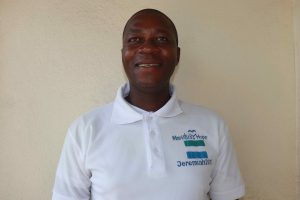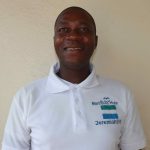The 300 community members of Santiguiya Village struggle without sufficient clean water to meet their daily needs. The current well they rely on has fallen into disrepair and needs rehabilitation. It only provides limited water that has been exposed to contamination. The shortage of water causes delays in the community's daily activities.
The impact is widespread and affects every facet of their lives. They spend more time fetching water than doing any other tasks. The community is Muslim but does not have sufficient water to do their daily ablution prayers. Women find it difficult to prepare food for their families on time. Those who use water for their livelihoods do not have the water they need, and their incomes suffer. And people's hygiene, like bathing, laundering, and cleaning of their household, is being neglected.

Single mother Hassanatu, age 14, commented, "I am one of the most affected by the water crisis in this community because I am a petty trader dealing with water every day in preparing my cassava product. Sometimes it is difficult for me to fetch enough water to wash my cassava due to the shortage of water in our community."
"[I] am a single parent that responsible for my daughter's schooling," Hassanatu continued. "Now it is difficult for me to prepare a large quantity of cassava to sell and make money for my livelihood. I will be happy when this well will be rehabilitated and have enough water that will serve the entire community."
The primary water source needing rehabilitation is a hand-dug well with a hand pump that has many issues. Water from the well tastes terrible and has a cloudy color. A disposable plastic water bottle acts as a siphon attached to the discharge pipe to redirect water into a longer tube so people can place their collection containers on the ground, exposing them to contamination. The pump breaks down frequently because of the overdemands of the community. The well pad is beginning to crumble, and the area is not fenced in. More importantly, the well is seasonal, meaning three months of the year (the dry season of April-June), it does not provide water.
There is another well on the outskirts of the community, but it is in even worse shape than the well currently being used.
"I am a baker and I find it very difficult to access safe and pure water to prepare my bread and rice cakes to bake and sell because of a shortage of water," said Foday Sillah, a 23-year-old farmer.
This community needs a reliable and functional water source that will provide them with clean, safe water to go about their daily lives and focus on things other than finding and collecting water.
Here’s what we’re going to do about it:
Well Rehabilitation
The well marked for this overhaul is dry for a few months every year and needs major work to supply adequate, clean water to the community year round. The pump will be removed, and a hand auger will be lowered inside and powered by a drill team. This hand auger will allow the team to drill several meters deeper to hit a sufficient water column that will ensure the well supplies water throughout all seasons.
As the team drills, casing will be installed, transforming the bottom of this hand-dug well into a borehole. PVC piping will connect this lower system directly to the pump, a construction that we know will also improve the quality of water.
Once this plan is implemented, everyone within the community will have access to safe drinking water in both quality and quantity, even through the dry months.
Hygiene and Sanitation Training
There will be hygiene and sanitation training sessions offered for three days in a row.
After our visit, the hygiene and sanitation trainer decided it would be best to teach community members how to build a tippy tap (a hand-washing station built with a jerrycan, string, and sticks). They will use these tippy taps for handwashing demonstrations, and will also teach about other tools like dish racks and the importance of properly penning in animals.
These trainings will also strengthen the water user committee that manages and maintains this well. They enforce proper behavior and report to us whenever they need our help solving a serious problem, like a pump breakdown.

 Borehole Well and Hand Pump
Borehole Well and Hand Pump


































